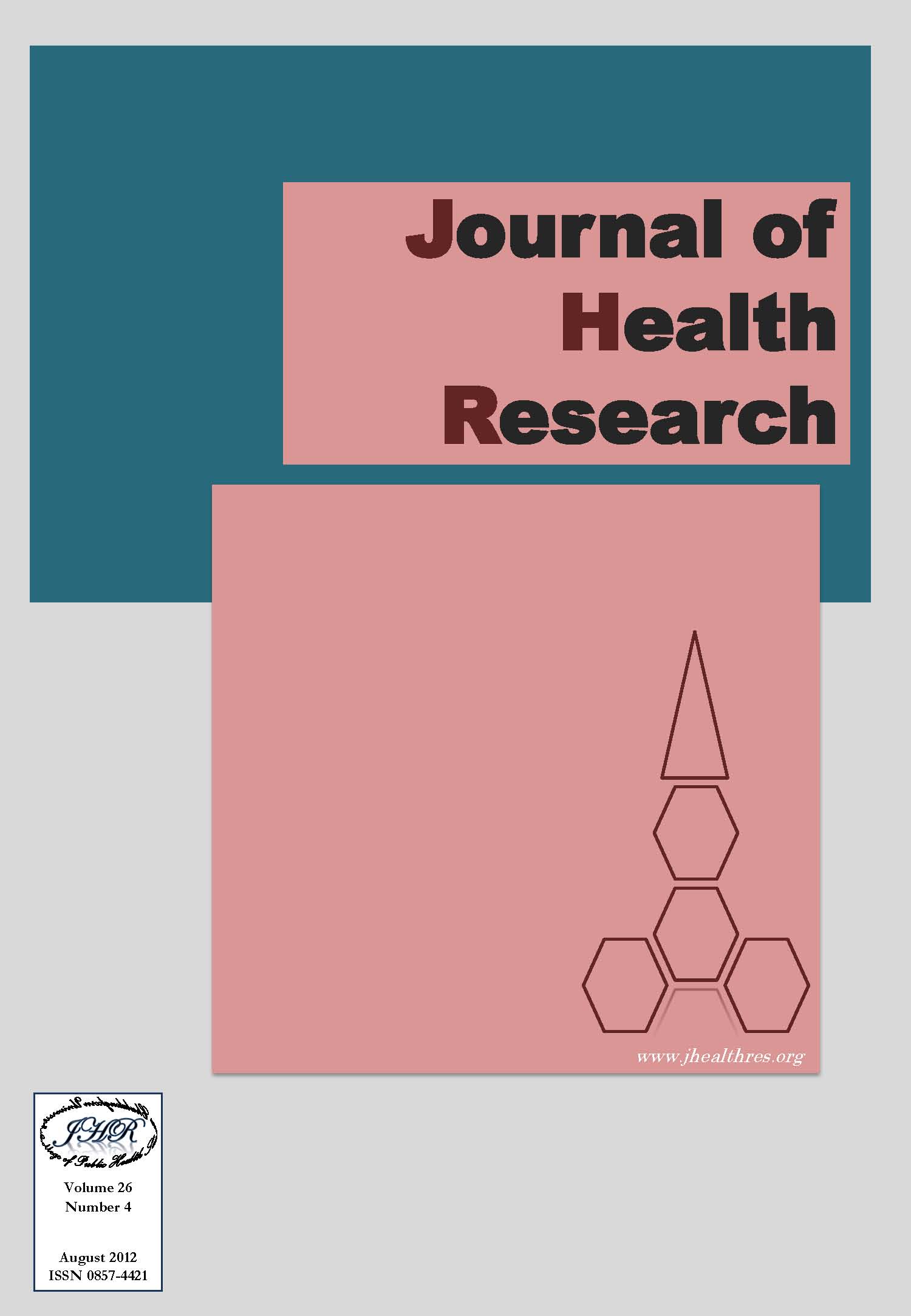Association of Environmental and Socio-Economic Factors with Dengue Prevention Practice Related to Dengue Outbreak in Mae La Temporary Shelter in Tak Province, Thailand
Keywords:
environmental, socio-economic, dengue, attack rate, refugee, drainageAbstract
A cross-sectional study, including 400 participants, was conducted to investigate the associations between environmental factors, socio-economic factors, and dengue prevention practice and dengue infection during 2010 dengue outbreak in Mae La Temporary Shelter. A systemic random sampling method was adopted and structured questionnaire was used for interviewing. Eighty one percent of the studied population (n=256) was the age group of 15-49 years old. Among these respondents, 51.1% (n=161) were jobless and 21.3% (n=85) gave the history of dengue infection during 2010. Eighty six percent of the dengue patient (n=73) lived in households with some mosquito breeding places (i.e. 5 to 10 breeding places inside and surrounding of the household), 68% (n=49) of dengue patients’ households have fair lighting condition (i.e. can read a book with natural light inside the household but need to concentrate) and 28.2% have poor lighting condition (i.e. no enough natural light to read a book inside the household and need artificial light assistant). In dengue prevention aspect, 54.6% of the households in this study possessed good drainage condition (i.e. water can drain properly from the house and its surrounding and no stagnation of water) while 58% of dengue patients’ households had fair drainage (i.e. water can drain slowly from the house but stagnation of water exit its surrounding). From statistical analysis with non parametric tests by using SPSS Ver. 16, we observed significant association exit between environmental, and socio-economic risk factors and dengue infection. There was significant association of socio-economic factor with age (χ2= 6.7, p<0.010), and occupation (χ2= 25.6, p<0.001); significant association of environmental factors with mosquito bleeding places in the household (χ2= 73.45, p<0.001), drainage conditions (χ2= 69.32, p<0.001) and lighting condition (χ2=1.19, p<0.001). Study findings can serve to guide further research, and there’s need to pay more attention on living condition of the refugees by providing basic and essential needs.







